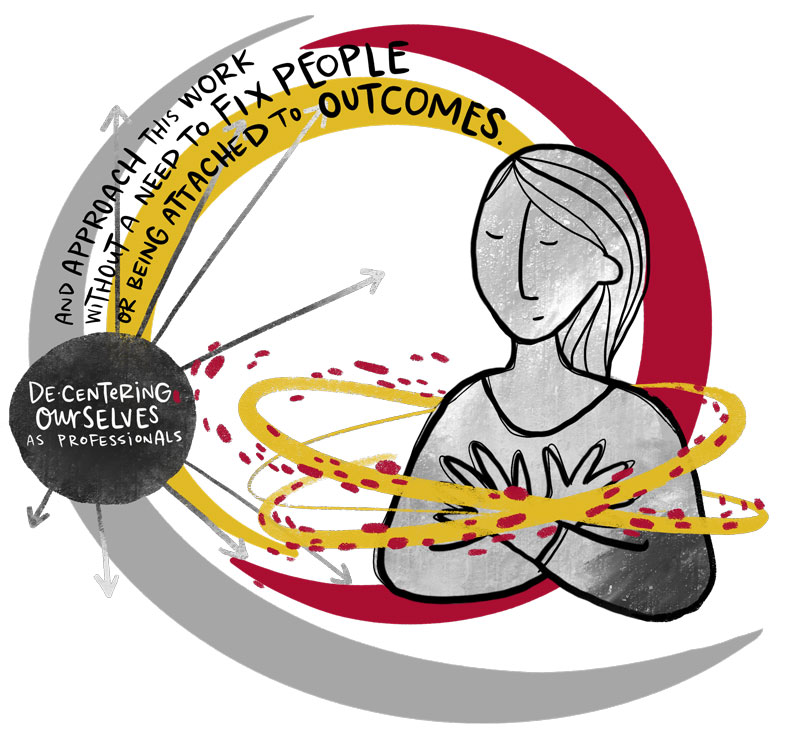
- Chronic pain is pain that persists for more than 3 months. It is
recognized as a disease in its own right.- Chronic pain is associated with significant emotional distress (e.g., anxiety, anger, frustration, depressed mood) and/or significant functional disability (interference in activities of daily life and participation in social roles).
- Chronic pain can be primary or secondary, emerging as a symptom of another underlying health condition1.
- Biomedical understandings of pain direct health care providers to make judgements regarding whether pain is “legitimate” or not, depending on whether the provider can identify a cause of the pain; this overlooks many forms of pain, including those that arise from trauma.
- Health care providers and the public often stigmatize people who experience chronic pain; this is especially the case for women, 2SLGBTQ+ people, and Indigenous people.
- People living with chronic pain are often assumed to be ‘drug-seeking’ when they are actually help-seeking2,
- Trauma and violence can negatively affect a person’s physiological responses to pain, reducing their physiological ability to regulate pain.
- People who experience interpersonal violence are more likely to experience chronic pain compared to those who do not. This means that certain groups, such as Two-Spirit, trans, and non-binary people, who face disproportionally high rates of interpersonal, domestic, and sexual violence, will be at heightened risk for chronic pain.
- Structural violence and inequities decrease people’s access to appropriate, effective pain management; pain stigma intersects with racism, ableism, transphobia, and discrimination related to poverty, mental health issues and substance use stigma.
- Without access to adequate pain management, people may seek alternative forms of pain management with additional risks
1Nicholas, M., Vlaeyen, J. W. S., Rief, W., Barke, A., Aziz, Q., Benoliel, R., . . . IASP Taskforce for the Classification of Chronic Pain. (2019). The IASP classification of chronic pain for ICD-11: Chronic primary pain. Pain, 160(1), 28-37



